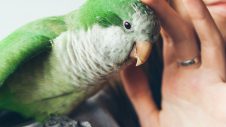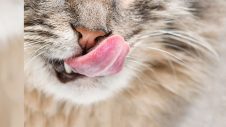In spite of careful attention to management and nutrition, even the best-kept aviaries may at some time experience the trauma of unexplained deaths or widespread illness in their birds. This article is to inform aviculturalists of the approach needed in determining the reasons behind such unwanted occurrences, so that a plan of treatment or husbandry change may be made. The role of the veterinarian in this case is to make a diagnosis and commence appropriate therapy as soon as possible. However, to achieve this, we rely a great deal on information supplied by the aviary owner.
In any investigation, the strategy employed usually follows the following pattern:
- The problem is first reported and a history of the aviary is obtained.
- Examination of the aviary and/or live birds may be carried out.
- Post mortem examination of birds found dead or sick birds which are euthanased.
- Specimens of blood or tissues may be taken and sent to a pathology laboratory.
- A laboratory report in addition to previous findings may lead to a Veterinarian making a diagnosis and recommending changes or treatment to the owner.
Therefore in his own interest, the aviculturalist should:
- Report the problem as soon as possible.
- Provide an accurate history, and
- Present specimens and birds which are useful to the investigation.
For example, a bird which has been dead for several days is not useful due to decomposition and internal changes; an aviary which has been hosed out just before the Veterinarian arrives does nothing to indicate the nature of the birds droppings or presence of external debris, poisons etc.
Useful history details include:
-
The number of birds, age groups, males and females
-
The proportion of the flock affected. Is the compliant confined to any particular group, variety, age or sex. (E.g. inherited deformities in newly hatched birds, or respiratory diseases more generally.) Geographical relationships between affected and non affected birds (other animals)
-
Recent arrivals and quarantine measures
-
Environment – cage material, flooring (litter, wire, concrete, grass or dirt).
-
Climate control – temperature, humidity, ventilation.
-
Provisions and location of the drinking water and feed, especially in relation to contamination by the bird’s droppings and by rodents.
-
Light intensity and duration of exposure.
-
Details of previous treatments or medications.
-
Breeding details, if a genetic problem is suspected.
A thorough ‘work-up’ is particularly important if the problem may be transmissible to humans. Such diseases in aviaries include Salmonellosis, Chlamydiosis (psittacosis), and allergenic mites.

 Greencross Vets
Greencross Vets 





